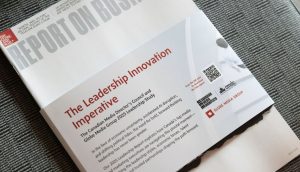When it comes to purchasing decisions around holidays, finance and utilities, men and women report having near-equal decision-making power in relationships.
But that’s not how many marketers see it.
That’s according to the latest AdReaction study by Kantar Millward Brown. The global study looked at more than 36,000 people as part of its Connected Life study, while also including ad buying and targeting trends it has gathered over the past eight years.
Kantar did find that most ads are balanced, gender-wise. On television, around 67% of ads target both genders equally, while 26% skew female and the remaining 7% skew male. Digitally, 72% are equal, 21% skew female and 7% skew male. In print, 62% of ads are equally targeted while 35% are female-targeted and 3% target men.
But the problem, says Kantar, is that many of the ads that specifically target one gender – especially those targeting women – should be speaking to both genders.
Certain categories are almost entirely targeted at women, whether that’s through the creative or the media buy. For baby products, women make up 98% of the target. That’s the same metric for both laundry products and household cleaners. Despite this, grocery/CPG purchasing decisions do skew female, but not dramatically so. In response to Kantar’s survey, 85% of women consider themselves the primary grocery buyer in their household, but so do 68% of men.
Another perceived imbalance is autos. While men do report more purchasing influence in this category, the separation (70% of men versus 56% of women) is not drastic. Despite that, only 46% of vehicle advertisements and 29% of motor oil advertisements target women.
According to Kantar, there’s consequences for stereotyping. Brands that are skewed too heavily toward one gender tend to under-perform, according to the firm. Brands identified by Kantar as “male-skewed” are worth an estimated US$9 billion less than brands that do not skew toward any gender.
The study also found that women may be less swayed by paid media campaigns in general. Studying men and women’s reaction to 487 brand campaigns, men showed aided brand awareness for 109 of the paid media campaigns, versus 94 campaigns for women. They also boasted higher brand favourability (111 campaigns for men, 94 for women) and higher purchase intent (108 for men, 95 for women). And, despite Kantar finding that ads are targeting men and women more equally, it also showed that the gender gap for brand effectiveness is widening – brand lift for men sits at around 3%, whereas women sit at 2%, the furthest they’ve been from men since 2014.
























